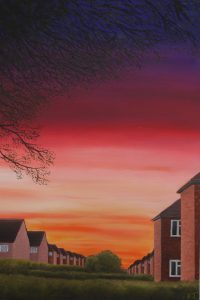Katie’s Oil Painting Tips and Tricks
Tip 1: Before you start prim any paper you plan to use with 2-3 layer’s of Gesso to prevent the oil seeping though the paper.
Tip 2: Buy some baby wipes. They are a great way to clean your brush between colours. But inshore you wipe it clean before using it for the next colour as it could leave an oily residue on the bristles.
Tip 3: Collect spare bit of cotton fabric to use as rags, to wipe clean your brushes. I wash my rags in warm soppy water between painting sections to avoid them going all stiff and with dried out crusty old pint.
Tip 4: Use a plate for a palette, it is easy to wipe clean after each use.
Tip 5: Invest in a palette knife; it will help you to scrape of any dried oil paint of your palette.
Tip 6: Rather than using the traditional white spirit and linseed oil, (which if you’re anything like me, find the smell to overpowering), use Zesit – a citrus smelling solvent and paint thinner.
Tip 7: Zinc White and Ivory black, take ages to dry so be aware of this while painting.
Tip 8: For your first layer of paint mix with a thinner to help plot out your painting and to speed up the drying time, creating thicker layers as you wish.
Tip 9: If you wish to reuse the colour on your palette, cover your palette with cling film to help prevent them drying out and wasting paint.
Tip 10: Finally, wash up after yourself! Clean your brushes by using a bar of soup and rubbing them into your palm before then rinsing them in water. This prevents the bristles sticking together and ruining your brushes.
 Oil painting on canvous 60x90cm
Oil painting on canvous 60x90cm